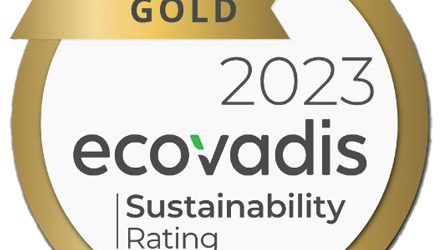How to reduce carbon emissions and enhance sustainability in the chain of your company
In recent years, successive crises have underscored the significance of a resilient supply chain. Along with showcasing its pivotal, and even vital, dimension for numerous companies, it is becoming apparent that the resilience of the supply chain hinges increasingly on the principles of sustainable development. These principles aim to safeguard the environment and contribute to the ongoing growth of our societies. As the world of business is grasping the challenges of achieving carbon neutrality, sustainable supply chains, which work towards lessening the environmental impact of procurement, logistics, and transport, seem to be the solution.

What is a sustainable supply chain?
Over several decades, environmental issues have increased, country by country, region by region, across the globe. This leads us to the current climate and ecological crisis that we are currently facing.
By definition, the sustainable supply chain (also referred to as the green supply chain) seeks to offset environmental degradation (greenhouse gas emissions, biodiversity erosion, exhaustion of natural resources, etc.) through the implementation of eco-friendly practices in operations. The primary goal is to boost environmental sustainability, but the benefits it provides are extensive.
Sustainable practices in logistics and the supply chain reduce environmental impact and production costs, improve risk management and stimulate economic growth. They also create a competitive edge in terms of customer satisfaction, brand image, and reputation. The concept evolves with innovation and the many techniques designed to safeguard both people and the planet.
Supply chain sustainability entails rethinking processes to embed the principles of sustainable development within the traditional supply chain. This covers logistics processes, the selection of suppliers and procurement of materials, product design, manufacturing and assembly, transport, distribution, and end-of-life management.
The indispensable de-carbonisation of the global supply chain
As the influx of reports from the IPCC (Intergovernmental Panel on Climate Change) on global warming piles up, becoming an inescapable reality for all, the supply chain emerges as a key lever, whatever the line of business.
Outlined in December 2019, the Green Deal for Europe plans to propel the European continent to the forefront in terms of achieving carbon neutrality by 2050. The intention is to transform the European Union into a modern economy, one that is both efficient in its resource usage and competitive.
Unsurprisingly, the supply chain plays an integral role in fulfilling these objectives. Let us bear in mind that, according to McKinsey & Company, for consumer goods companies, for instance, the supply chain accounts for over 80% of greenhouse gas emissions.
Furthermore, the American environmental agency warned that the freight and transport sectors are responsible for the majority of global greenhouse gas emissions. And this shows no signs of abating! If no action is taken, the road freight transport sector within the European Union is projected to see an increase of around 50% by 2050.
Goal: de-carbonise supply chain operations
To reduce carbon emissions in the supply chain, a global approach is necessary. These environmental issues affect every link in the logistics chain: Transport, warehouse management, procurement, packaging, distribution, delivery, and so on. Neglecting any of these stages would undermine the final result.
A comprehensive approach within the company
Following these dynamics, supply chain stakeholders need to focus mainly on transport. This naturally implies favouring alternative modes of transport, which emit fewer greenhouse gases, such as rail freight, river transport, electric vehicles, or bio-fuels. It also involves optimising transport routes and utilisation of space, whether in trucks, containers, etc.
For their part, warehouses must commit to the energy transition, promoting the use of renewable energy. The same requirement applies to packaging, which should be used more rationally. Likewise, containers and their content should match in size and recycled materials should be favoured. A circular economy vision of production also needs to be implemented, giving precedence to re-use and recycling.
Finally, a sustainable supply chain requires making the right choices regarding procurement. This primarily involves putting in place a responsible procurement policy, sourcing and then relying on a supplier network that complies with its Corporate Social Responsibility (CSR) commitments.
Technology, at the service of sustainability in the supply chain
In this respect, digital tools are a valuable ally. The predictive power of artificial intelligence helps anticipate demand, while geolocation optimises truck routes. More efficiently-filled trucks spending less time on the roads equate to saved CO2 emissions.
Meanwhile, Warehouse Management Systems (WMS), combined with Radio Frequency Identification (RFID) and 5G technologies, help reduce execution costs and continually improve warehouse, stock, and supply management. These technologies provide each company opportunities to tangibly act towards a more sustainable supply chain.
The sustainable supply chain, a methodical approach
The Lean approach, which aims for continuous process improvement, helps approaching this difficulty methodically. Four main stages can be identified in this process.
Step 1: Measuring the environmental impact of the entire supply chain
This assessment applies to all areas of the logistics chain. Overlooking even one of these links will distort the final result.
Step 2: Implementing corrective actions
Conducted in the short, medium, and long term, the implemented strategies should have only one goal: Improving the environmental performance of the logistics chain. Its longevity and effectiveness involve raising awareness and accountability among employees (for example, by training them), pooling warehouses and R&D efforts, as well as enforcing an ambitious investment policy.
Step 3: Monitoring performance
Of course, it is essential to develop indicators that can assess and direct the evolution of supply chain environmental performance. Some examples of these indicators are:
- The Environmental Condition Indicator (ECI), which measures the impact of an activity on the environment;
- The Management Performance Indicator (MPI), which shows if the company is in line with the objectives it had previously set and if the measured performances comply with existing regulations;
- The Operational Performance Indicator (OPI), which helps establish a comparison between the results of the progressively implemented sustainable supply chain and the previous operation of the supply chain.
Step 4: Communicating the results both internally and externally to the company
Once the results are real and verified, there is no valid reason not to promote them. They not only demonstrate best practices but also contribute to commercial success and the company’s image policy.
Download our “Procurement Policy and CSR” white paper.






